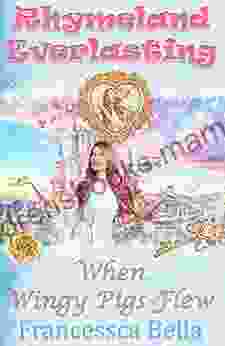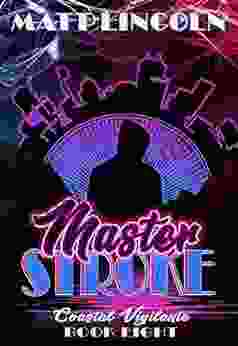The Fabric of Civilization: Unraveling the Threads that Weave Our World

The tapestry of civilization is a vibrant and ever-evolving masterpiece, woven from the intricate threads of human ingenuity, culture, and shared experiences. From the earliest civilizations of Mesopotamia and Egypt to the modern metropolises of today, textiles have played a pivotal role in shaping our societies, serving as a testament to our creativity, ingenuity, and interconnectedness.
Textiles: The Foundation of Society
Textiles, in their various forms, have been an indispensable part of human existence for millennia. They provide us with protection from the elements, adorn our bodies, furnish our homes, and serve as a medium for artistic expression. The production and use of textiles have driven technological advancements, facilitated trade, and fostered cultural exchange.
4.7 out of 5
| Language | : | English |
| File size | : | 69001 KB |
| Text-to-Speech | : | Enabled |
| Screen Reader | : | Supported |
| Enhanced typesetting | : | Enabled |
| X-Ray | : | Enabled |
| Word Wise | : | Enabled |
| Print length | : | 321 pages |
In ancient Egypt, the production of linen was a highly specialized craft. The delicate fibers of the flax plant were spun into fine threads, which were then woven into intricate patterns. Linen was prized for its breathability, durability, and luxurious feel, and it became a symbol of wealth and status.
In the Middle East, the development of wool production laid the foundation for thriving civilizations. Sheep were domesticated for their soft and insulating fleece, which was transformed into warm and durable fabrics. Wool textiles became essential for survival in the harsh desert climates and facilitated the growth of nomadic societies.
As trade routes expanded across continents, textiles became a valuable commodity. The Silk Road, which connected the East and West, facilitated the exchange of exotic fabrics, such as silk, cotton, and wool. These textiles were highly sought after for their beauty, comfort, and durability, and they played a significant role in the development of global commerce.
Textiles as Cultural Expressions
Textiles transcend their practical function and serve as powerful expressions of cultural identity. The motifs, patterns, and colors woven into fabrics often carry deep symbolic meaning, conveying stories, beliefs, and traditions. Textiles can reflect the history, geography, and social hierarchy of a particular culture.
In Japan, the kimono is a traditional garment that has been worn for centuries. Its intricate designs and elaborate patterns, often depicting nature scenes or mythical creatures, are a testament to the country's rich artistic heritage.
In Peru, the vibrant textiles woven by indigenous communities showcase their deep connection to the land. The use of natural dyes, such as cochineal and indigo, and the intricate geometric patterns reflect the beauty and diversity of the surrounding environment.
Textiles can also serve as a form of protest and social commentary. In the United States, the "quilt block" has been used as a symbol of resistance and solidarity. Quilts made from recycled fabrics and adorned with political messages have been used to raise awareness for social justice issues.
Textiles and Technological Advancements
The production of textiles has been a driving force behind technological advancements throughout history. The invention of the spinning wheel in India revolutionized the textile industry, enabling the mass production of yarn. The power loom, developed in England during the Industrial Revolution, further accelerated the production process, leading to a dramatic increase in the availability and affordability of textiles.
In the 20th century, the development of synthetic fibers, such as nylon and polyester, introduced new possibilities for textile production. These fibers were highly durable, moisture-resistant, and wrinkle-free, making them ideal for a wide range of applications, from clothing to industrial fabrics.
Today, cutting-edge technologies are being applied to the textile industry, such as 3D printing and nanotechnology. These technologies are enabling the creation of innovative fabrics with enhanced properties, such as self-cleaning, antimicrobial, and energy-generating capabilities.
The Sustainability Challenge
While textiles have brought immense benefits to society, their production and consumption have also raised concerns about sustainability. The textile industry is one of the largest contributors to pollution and water consumption. Raw material extraction, chemical processing, and waste disposal all have a significant environmental impact.
To address these challenges, the textile industry is embracing more sustainable practices. The use of organic and recycled materials, the adoption of eco-friendly production processes, and the promotion of fair labor practices are becoming increasingly common.
Consumers are also playing a role in driving sustainability in the textile industry. The demand for eco-friendly and ethically produced fabrics is growing, putting pressure on manufacturers to adopt more responsible practices.
By embracing sustainable solutions, the textile industry can continue to meet our needs while preserving the environment for future generations.
The fabric of civilization is a testament to the ingenuity, creativity, and interconnectedness of humanity. From the humble beginnings of ancient textiles to the cutting-edge fabrics of today, textiles have shaped our societies in countless ways.
As we continue to innovate and explore new possibilities in textile production, it is essential to consider the sustainability challenges we face. By embracing sustainable practices and working together, we can ensure that the fabric of civilization remains vibrant and resilient for generations to come.
4.7 out of 5
| Language | : | English |
| File size | : | 69001 KB |
| Text-to-Speech | : | Enabled |
| Screen Reader | : | Supported |
| Enhanced typesetting | : | Enabled |
| X-Ray | : | Enabled |
| Word Wise | : | Enabled |
| Print length | : | 321 pages |
Do you want to contribute by writing guest posts on this blog?
Please contact us and send us a resume of previous articles that you have written.
 Top Book
Top Book Novel
Novel Fiction
Fiction Nonfiction
Nonfiction Literature
Literature Paperback
Paperback Hardcover
Hardcover E-book
E-book Audiobook
Audiobook Bestseller
Bestseller Classic
Classic Mystery
Mystery Thriller
Thriller Romance
Romance Fantasy
Fantasy Science Fiction
Science Fiction Biography
Biography Memoir
Memoir Autobiography
Autobiography Poetry
Poetry Drama
Drama Historical Fiction
Historical Fiction Self-help
Self-help Young Adult
Young Adult Childrens Books
Childrens Books Graphic Novel
Graphic Novel Anthology
Anthology Series
Series Encyclopedia
Encyclopedia Reference
Reference Guidebook
Guidebook Textbook
Textbook Workbook
Workbook Journal
Journal Diary
Diary Manuscript
Manuscript Folio
Folio Pulp Fiction
Pulp Fiction Short Stories
Short Stories Fairy Tales
Fairy Tales Fables
Fables Mythology
Mythology Philosophy
Philosophy Religion
Religion Spirituality
Spirituality Essays
Essays Critique
Critique Commentary
Commentary Glossary
Glossary Bibliography
Bibliography Index
Index Table of Contents
Table of Contents Preface
Preface Introduction
Introduction Foreword
Foreword Afterword
Afterword Appendices
Appendices Annotations
Annotations Footnotes
Footnotes Epilogue
Epilogue Prologue
Prologue Jorge Alvarado Jimenez
Jorge Alvarado Jimenez Tim Higgins
Tim Higgins Matthew R Kratter
Matthew R Kratter Francessca Bella
Francessca Bella Broderick Johnson
Broderick Johnson Jen Limarzi
Jen Limarzi Lisa Rusczyk
Lisa Rusczyk Devin Dozier
Devin Dozier Bob Sorge
Bob Sorge Patricia Heaton
Patricia Heaton Carolyn Buppert
Carolyn Buppert Thomas Meyer
Thomas Meyer Dr Rupy Aujla
Dr Rupy Aujla Glenda Watson Hyatt
Glenda Watson Hyatt Caitlyn Siehl
Caitlyn Siehl S L Turner
S L Turner Ellen Jovin
Ellen Jovin Carlos Del Valle
Carlos Del Valle Janice N Chapman
Janice N Chapman Sherry Richert Belul
Sherry Richert Belul
Light bulbAdvertise smarter! Our strategic ad space ensures maximum exposure. Reserve your spot today!
 Ike BellFollow ·7.3k
Ike BellFollow ·7.3k Nick TurnerFollow ·6.8k
Nick TurnerFollow ·6.8k Mike HayesFollow ·14.7k
Mike HayesFollow ·14.7k Brenton CoxFollow ·7k
Brenton CoxFollow ·7k Herman MelvilleFollow ·11.6k
Herman MelvilleFollow ·11.6k Guy PowellFollow ·9.1k
Guy PowellFollow ·9.1k Gabriel Garcia MarquezFollow ·12.6k
Gabriel Garcia MarquezFollow ·12.6k Ron BlairFollow ·17k
Ron BlairFollow ·17k
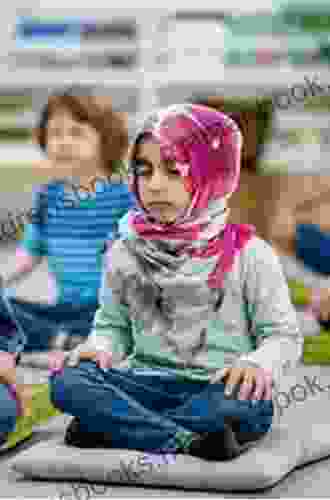
 Tom Clancy
Tom ClancyReading Wellness: Lessons in Independence and Proficiency
Reading is a fundamental skill that can...
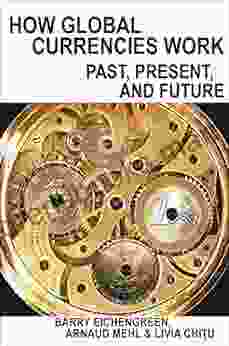
 Brody Powell
Brody PowellHow Global Currencies Work: A Comprehensive Guide to...
Overview of...
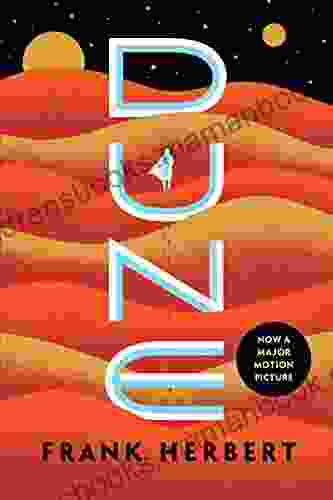
 Dwight Bell
Dwight BellDune by Frank Herbert: An Epic Space Opera That Explores...
Dune by Frank...

 Ronald Simmons
Ronald SimmonsAn Anthology of Early Plays (1858-1938): A Journey into...
: Uncovering...

 Dominic Simmons
Dominic SimmonsCulture in the Ancient World: A Comprehensive Exploration...
Culture is a complex and multifaceted concept...
4.7 out of 5
| Language | : | English |
| File size | : | 69001 KB |
| Text-to-Speech | : | Enabled |
| Screen Reader | : | Supported |
| Enhanced typesetting | : | Enabled |
| X-Ray | : | Enabled |
| Word Wise | : | Enabled |
| Print length | : | 321 pages |



